If you haven’t read the first piece in this hexalogy, I highly recommend reading (or re-reading if you fancy) it to orient yourself to the structure and intention of this series. I am not a formally trained scientist, but I do love all things cosmological and find deep joy writing on the edge of what is currently known and just beyond it - that place our imagination can take us that isn't too far down the street from reality. It's a space I've come to call speculative creative non-fiction. Welcome.
When Trees Die
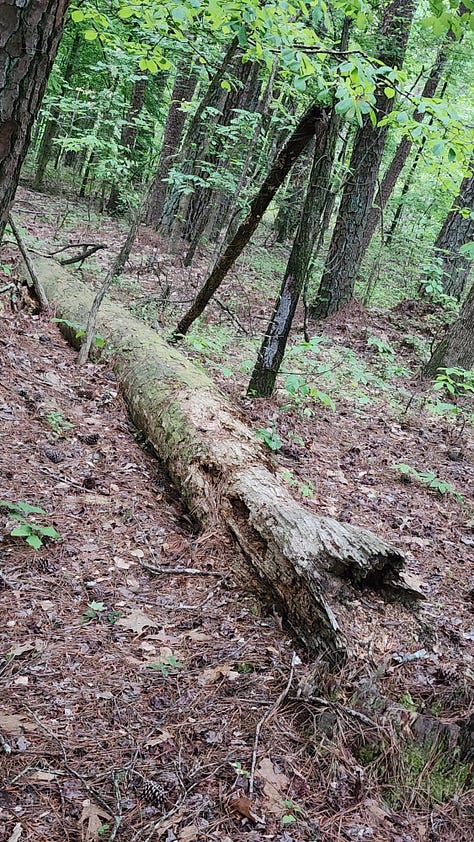
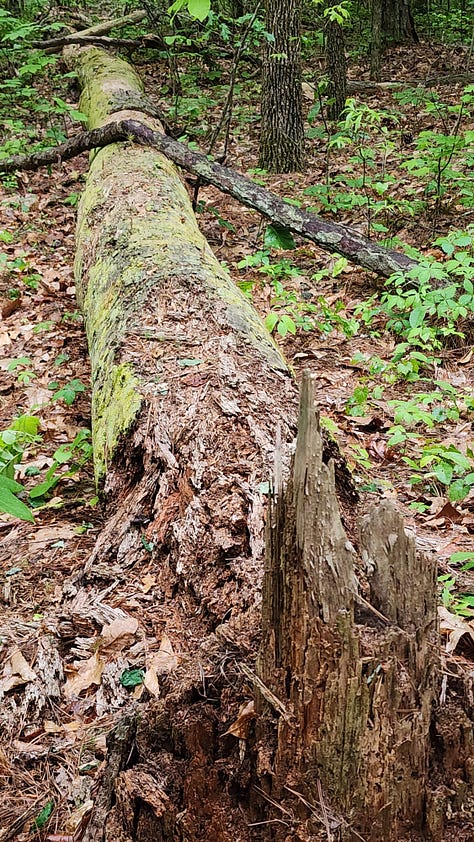

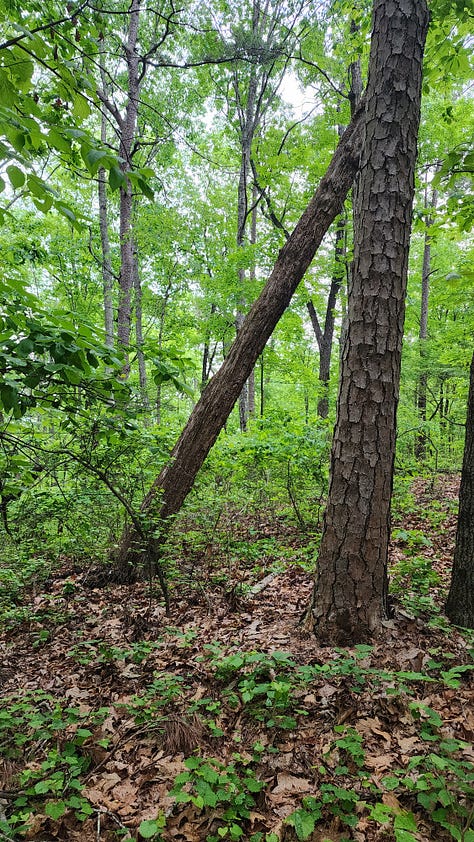
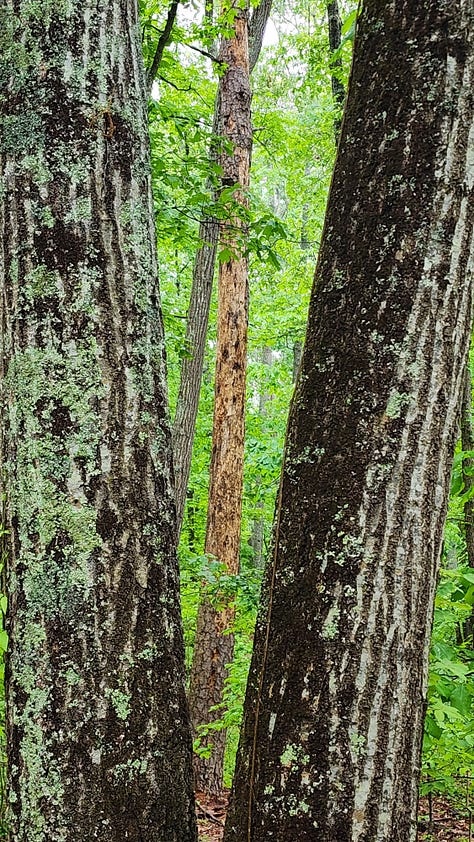
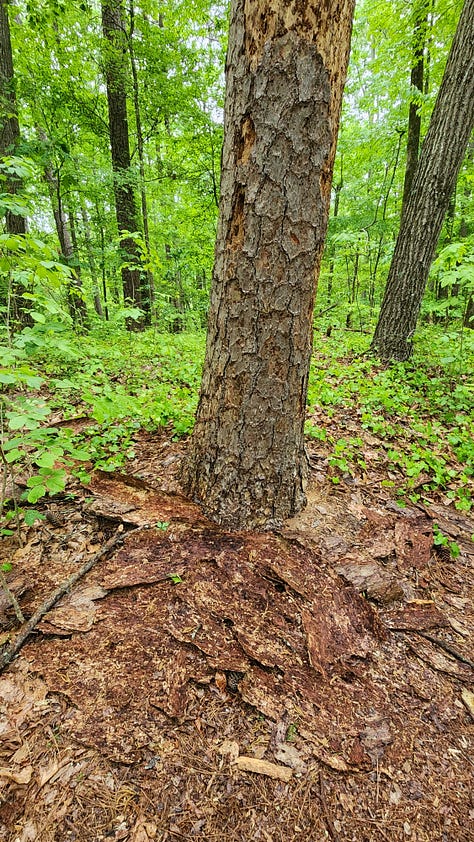
I know I talk about stars. A lot. You know what else I'm really into? Trees. I've been learning more about trees in recent years, and they are swoon-worthy.
At some point, I was paying a lot of attention to the trees accompanying me on my walks. I noticed death, in particular, and the relationships that remained even after the tree's demise.
Sometimes, the relationships were ones I couldn't readily see. But, because of what I'd been learning about the forest floor, mycelium, and other entities in the ecosystem, I knew there was nothing sterile or disconnected about the tree's death.
Here in the US, we have a weird relationship with grief, especially when it comes to someone dying. Apart from customs and rituals maintained in certain cultures, there is a rushing to put bodies in the ground and an almost irresponsible allowance of forgetting1 of the person whose body is no longer animated with their Love.
You know, we can still practice the presence of someone we Love even after they've passed?
Learning more —and appreciating, not appropriating— about how communities around me have historically approached death has opened me up to explore. For instance, learning about the Indigenous Mexican community's practice of Dia de Muertos, having a friend share about a South African practice of burying bodies on land the family still lives on, and seeing Indian friends' in-home altars for the remembrance of their beloveds have been points over time that have challenged my relationship to death. It's also made me look into my own traditions and practices, expanding into them with ease and authenticity.
If you aren't sure about your capacity to honor what others share about their personal and communal practices, the beings in the ecosystem you are a part of—the animals, insects, plants, and trees—have much to teach you. Especially as we enter into the season for death, decay, and stillness, take note. Notice what you connect to. Learn more about your own lineage, both human and ecological, and pick up the threads that already belong to you. What if they haven't been severed, only hidden?
In this season of learning more about trees, I got into Peter Wohlleben's The Hidden Life of Trees2. Something, in particular, struck me from his writing. As if underlining the concept of Life & Death & Life, one I return to often, he talks about how when a tree falls on the forest floor, it decays into the ground that nourishes the growth of the trees who are still alive.
Stop.
I want to make sure you caught that.
When the tree dies, it nourishes the ground its survivors are rooted in.
Breathe.
I wholeheartedly believe this is true of those who have Loved us and have left this life.
Life.
Anyhow.
Isn't that what it is? Life, anyhow?
Somehow, beyond the material connection, those who Loved you—Loved us—are still here. With us, in us, of us, through us. In our dreams, whispering on the winds, a smell from nowhere, a "coincidence." Love is energy—never created or destroyed. Regardless of what you believe about whatever comes after this corporeal experience, Love stays and connects us.
I've started practicing with my family celebrating Loved ones who have died—both on their birth days and their death anniversaries. We light a candle, we tell stories (so my kids can get to know some and remember others), and we eat something they liked or made. It seems small, but this is our embodied practice of Life, anyhow.
This is how the separation is never really permanent, even when our hearts ache so bad to be held by them. To hear their voice in the other room just one more time.
This is how they stay alive in us on purpose. When we let our bodies practice Life, anyhow. We don't only replay memories. No, we tell their jokes, we imitate their laugh, we eat their food, and we light the candle whose flame dances as we practice the ever-steady presence of those who have Loved us well, and are gone (-ish).
Here's an idea: Next time you take a walk, notice the trees that are dead or dying. Return to this place in several weeks and notice. What has changed where you saw death? Are there any signals that life is present? Take note of how you feel in your body as you notice.


Presence, Not Resilience
I live in a place where I can walk right out of my home and onto a fairly quiet, tree-lined sidewalk and take a stroll. So, when I don't head to a local park, this is what I do. After walking the same way countless times, a tree caught my attention from a distance. This Tree thrives with a strong base, sturdy branches, and full foliage. What made it stand out amongst its neighboring arbors is that it's thriving despite the fact that there is a power line running between the branches, effectively splitting the tree's growth into two halves.
I wondered, at first, if the power lines were put up after the branches had grown to their current height. That didn't seem likely…
This ends the preview portion of this issue.
The Astronomical Grief Hexalogy will be published with a preview for free subscribers each month of the series around the new moon. A companion post that focuses on The Forces and our anchors will go live on the full moon each month of the series and be available to all subscribers. Audio Conversations with some of our favs - like , , , and (I could go on) - will be available to paid subscribers with a preview for all.
Keep reading with a 7-day free trial
Subscribe to Of Earth & Of Stars to keep reading this post and get 7 days of free access to the full post archives.





